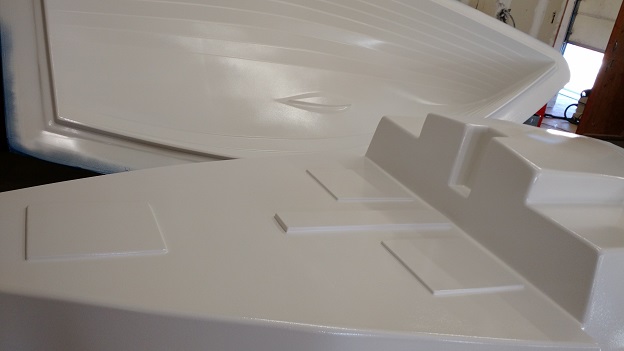One item that has been much debated during the Sage 15 development process is the location we will make the boat components (hull, deck, cabin liner, etc). There has been ‘flip flopping’ on the issue: make parts here at the boat shop; no, out-source; no, make them here … repeat. Well, in late 2015 we made a choice: YES, the Sage 15 will be made entirely in the Sage Marine boat shop in Golden, Colorado.
Why was ‘where to lay up the parts’ a much debated issue? To legally build boat components, even with a vacuum infusion process, there are still volatiles and particulates that are released. Most of this comes from spraying gel coat into the mold before laying up the fiberglass and carbon fiber. Many boat builders are not legal, some go so far as to spray on weekends outside so as not to ‘draw attention’ to their illegal practice. At Sage we strive to do things ‘the right way’. In this case to make fiberglass parts we need a way to capture the volatiles and particulates and a fire resistant facility.

For Sage this involves installing a spray booth, upgrading the building’s electrical and fire suppression systems. Before installing a booth and upgrading the building one must get permissions from a variety of city and state departments, offices and officials. Obviously this takes time … and money.
At this time the money is in place, the design for the booth and building is done, and we are one official away from approval to begin assembling the booth and renovating the building. Once that last ‘sign off’ is complete the six to ten week construction project will begin.


















